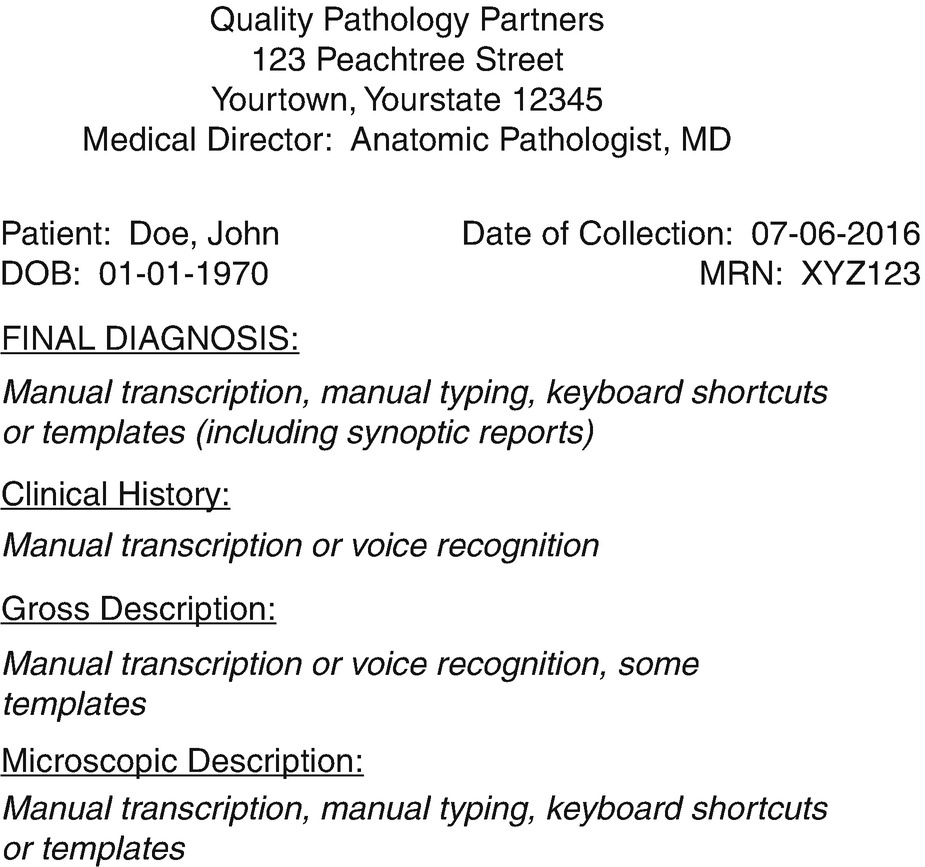


More sets of eyes do not ensure quality if those eyes are untrained. This process creates several opportunities for errors and makes correcting those errors more difficult. That transcription has to be reviewed and corrected-often by a clinician unsure of the details of the original case. When a pathologist dictates a report, that dictation has to be transcribed-often by a person with little familiarity with medical terminology. But let’s take a closer look at the effects of this compartmentalization. After all, it only takes a few minutes to dictate, and dictation can be guided by the use of paper templates.ĭictating narrative reports seems efficient because it compartmentalizes a time-consuming task into several smaller steps. “But what about dictation?”Īt first glance, dictation seems like a quick and simple method for pathologists to communicate their findings. And research already suggests that electronic template reporting is faster than narrative methods-for surgeons and for pathologists . Turnaround times for report approval and distribution are improved, providing care teams and quality improvement initiatives with timely access to clinical performance indicators. Synoptic operative reporting has been found to substantially reduce reporting turnaround time. Like any new practice, electronic synoptic reporting includes a learning curve, so your first few reports will likely take longer than your current method. Synoptic reporting is a structured method of electronic medical documentation that uses coded values to help clinicians produce more complete, accurate and interpretable reports.īut if you’re a pathologist who already excels with dictated or narrative reporting, you might be asking… “Won’t digital templates take longer?” Because pathology reports are crucial to designing cancer care plans, timely reports are a critical component of cancer care. This is one reason that pathologists are choosing electronic synoptic reporting templates.


 0 kommentar(er)
0 kommentar(er)
